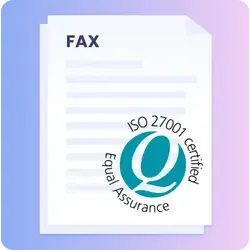Spam Filtering
Spam filtering is the process of detecting and blocking unwanted, unsolicited, or potentially harmful messages, often before they ever reach the recipient’s inbox. While most commonly associated with email, spam filtering is also applied to SMS messages, online forms, social media comments, and even fax transmissions.
In today’s digital communication landscape, spam filters play a critical role in protecting users from scams, phishing attempts, and irrelevant content while helping businesses maintain credibility and deliverability.
Why Do We Need Spam Filters?
The volume of spam is staggering. It's estimated that nearly half of all emails sent globally are spam, not to mention increasing volumes of SMS and robocalls. Without effective spam filtering, both individuals and businesses would be flooded with junk messages, phishing links, malware, and fraud.
Spam filters help to:
Protect against cybersecurity threats
Improve user experience by reducing inbox clutter
Prevent brand damage caused by association with spam
Ensure legitimate communications don’t get lost in the noise
How Spam Filtering Works
Spam filters analyse a combination of factors to determine whether a message is legitimate or spam. These may include:
Content and keywords: Filters flag messages with suspicious phrases (e.g. “free money,” “click here,” “urgent response”).
Sender reputation: Messages from blacklisted IPs, domains, or phone numbers are automatically blocked.
Formatting: Excessive use of capital letters, exclamation marks, or strange fonts can trigger spam alerts.
Message volume and frequency: Sending too many messages in a short time can raise red flags.
User behavior: If recipients frequently report messages as spam, future messages from the same sender may be filtered.
Advanced filters also use machine learning to adapt and improve detection over time.
Types of Spam Filters
Depending on the communication channel, spam filters may differ in function:
Channel | Spam Filter Characteristics |
Content scanning, domain reputation, SPF/DKIM authentication | |
SMS | Carrier-level filtering, opt-out enforcement, keyword scanning |
Online Forms | CAPTCHA verification, IP filtering, bot detection |
Fax | Blocking known spam fax numbers or junk faxes via digital fax platforms |
Advanced filters also use machine learning to adapt and improve detection over time.
The Impact on Businesses
For businesses, spam filters are a double-edged sword. While they protect you and your customers, they can also block legitimate messages if you're not careful.
Common challenges include:
Marketing emails ending up in junk folders
SMS messages blocked by carriers for containing trigger words
Inability to reach customers due to poor sender reputation
This is why it’s crucial to follow best practices in digital communications, especially when using bulk email or online SMS platforms.
Avoiding the Spam Filter for Text Messages: Best Practices
To improve your SMS deliverability and stay on the safe side of spam filters:
Always get explicit SMS opt-in consent
Personalise your messages and avoid spammy phrases
Include clear opt-out options
Use a consistent dedicated virtual number
Use reputable platforms like Notifyre, which follow anti-spam compliance standards
By respecting user privacy and following carrier guidelines, your messages are more likely to land where they belong, right in the inbox.
SMS Marketing
Use scheduling tools, SMS templates and bulk contact upload to send SMS broadcasts.
 Explore SMS Marketing
Explore SMS Marketing 









